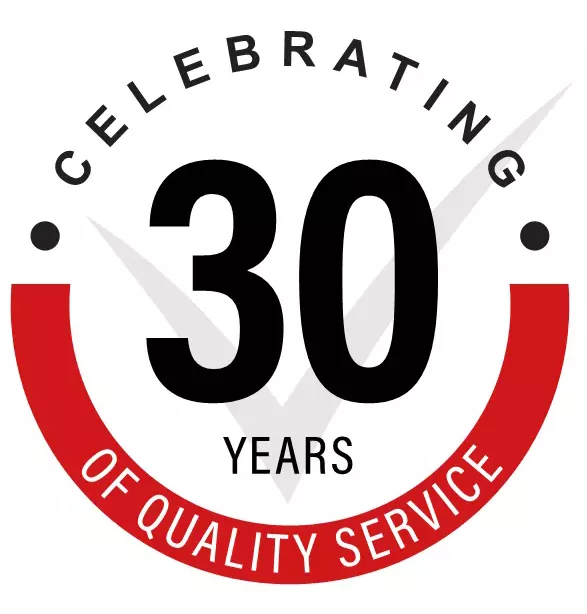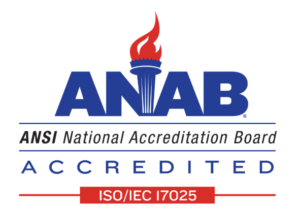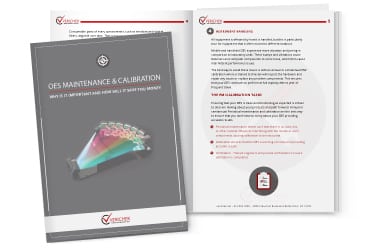The ability to identify metal is a valuable skill for many operations such as welding, machining, cutting, and fabricating.
Metal workers use various methods, from traditional to modern ones, to identify the scraps and sheets of metals that come into the shop. In this post, we will explore some well-known traditional and modern metal Identification methods as well as the pros and cons of using them.
| Traditional Testing Methods | Modern Metal Testing Methods |
|---|---|
| Appearance Test | Optical Emission Spectrometry |
| Spark Test | X-Ray Fluorescence |
| Rockwell Test | X-Ray Diffraction |
| Brinell Hardness Test | LIBS |
APPEARANCE TEST
The appearance test does not always provide sufficient information, but it could provide enough information to classify the metal. This test considers the color of metal and the existence of a machined mark or lack of one on the surfaces of the metal.
SPARK TEST
Spark test is conducted by allowing a piece of metal to touch the high-speed portable or stationary grinder with enough pressure to create a spark of stream. An experienced metal worker visually inspects the spark stream to identify the metals and considers the length, color, and form of the spark stream before identifying the metal.
When using this visual spark testing technique, we recommend reserving this test for experienced technicians. At Verichek, we offer metal testing services as well as sales of metal testing instruments. When a client requests a spark test, only the most experienced and qualified technicians at Verichek are dispatched for the assignment.
ROCKWELL TEST
A Rockwell hardness-testing machine is needed to perform this test. The point of this method is to measure the depth of an indentation made by a cone-shaped point in the testing machine. This specific test is limited as it reveals only one of many metal properties – which is the hardness of the metal. Soft metals will have a deeper indentation and hard metals will have a lighter impression.
BRINELL HARDNESS TEST
Brinell hardness test is similar to the Rockwell as they both evaluate the metal impression left by an intended object. The Brinell hardness test is different in that it measures the area of impression. A hardened ball is forced onto the metal surface under a 3,000 kg load to create an impression. The impressed area is then measured and given a hardness number. A large impressed area indicates softer metal, which means a lower hardness number.
COMPARING AND CONTRASTING TRADITIONAL TESTING METHODS
| APPEARANCE | SPARK | ROCKWELL | BRINELL-HARDNESS |
|---|---|---|---|
| Based on appearance | Based on appearance | No needed equipment | Needs additional equipment |
| Classifies metal | Classifies metal | Tests metal hardness | Tests metal hardness |
| Does not need equipment | Needs additional equipment | Measure depth of impression | Measures area of impression |
| Does not always provide sufficient information | Needs a trained technician | Needs a prepared surface | Used for rough surfaces |
MODERN METAL TESTING METHODS
No longer relying on just the eye or the personal experience, modern metal testing methods incorporate technology to improve the process speed and result accuracy while protecting the samples.
One popular technique is called Positive Metal Identification (PMI) which uses X-ray Fluorescence (XRF) and Optical Emission Spectrometry (OES). PMI is the analysis of metallic alloy to establish its composition and alloy grade identification by reading the quantities by percentage of its elements. PMI analyzers provide detailed element analysis of materials for uses from industrial to research.
Both XRF and OES techniques are widely used in the industry because they provide accurate results within seconds of testing. There are slight differences in the techniques as explained below. PMI is a non-destructive testing method used to discover or verify the elemental composition of materials or metals. Some advantages of PMI analyzers include:
Materials are assessed to make sure that they meet up with the required specification and standards.
Operators are able to find out if the materials or products were manufactured using the right combination of metallic elements (alloys).
Ensures the right filler material was used in the materials or metals which have been welded.
Checks to discover if the wrong elements or metals were used in the production of the alloy.
OPTICAL EMISSION SPECTROMETRY
Optical Emission Spectrometry (OES) also called spark emission spectrography, is easy to use, fast, and can define the exact quantitative breakdown of solid materials. OES, also known as Atomic Emission Spectrometry, uses the intensity of light emitted at a particular wavelength to determine the elemental composition of a sample. Moreover, a single element can produce many spectral lines each with its characteristic. Like fingerprints, emission of rays and light are unique to metal types.
The analysis is given as a percentage breakdown. OES analysis is versatile and can be used in stationary, portable, or mobile environments. Combining the speed, versatility, and easy-to-use of this method, make it the ideal test for alloys.
Optical emission spectrometry involves applying electrical energy in the form of a spark generated between an electrode and a metal sample, whereby the vaporized atoms are brought to a high energy state within a so-called “discharge plasma”.
X-RAY FLUORESCENCE
X-Ray Fluorescence (XRF) is a highly precise and accurate measure of the elemental composition of materials. XRF spectrometers excite a sample with high-energy X-rays forcing the sample to emit certain characteristic rays which are read by the XRF spectrometer.
A handheld XRF gun is required, but the process can occur in fractions of a second. Metals with high percentage levels can take a few seconds to be read, while metals with part-per-million levels can take up to a few minutes. Still, you cannot find a faster reading.
X-RAY DIFFRACTION
X-Ray Diffraction (XRD) is used to identify the chemical composition information of metals. XRD can be used hand in hand with XRF as XRD takes the testing one step further to give added context.
The process identifies the crystalline phases present and compares them to a database of archived phases. Elements are analyzed in a ground powder form.
XRD helps evaluate minerals, polymers, corrosive products as well as other varying unknown materials. This method can be useful to identify and quantify phases as well as perform texture analysis.
Unlike traditional methods where it takes years of training, metal workers armed with PMI spectrometers can be trained and begin working on their assignments in minutes.
For new and used metal analyzers that use this technology, check out our online inventory of metal analyzers.
LASER INDUCED BREAKDOWN SPECTROMETER (LIBS)
Laser-induced breakdown spectrometer (LIBS) is a form of Atomic Emission Spectrometry but it uses a highly energetic laser pulse to excite the sample. This technique is also considered non-destructive to samples and is popular in scrap metal analysis.
At Verichek, our mPulse is a handheld LIBS that can analyze any metal type within 1 second. The mPulse releases a laser causing a high-temperature plasma on the surface of the sample and the light generated indicates the composition of the sample. This is a point-and-shoot process that provides fast and accurate results!
COMPARING AND CONTRASTING MODERN TESTING METHODS
With modern testing techniques like Positive Metal Identification, you can minimize your working time and maximize your profit whereas traditional metal testing methods can only provide general information on your samples. From handheld spectrometers to bench-top lab OES and mobile OES, you can shop our inventory for metal analyzers. For those with a budget, our used metal analyzers are affordable and have been tested for quality.
If you’re not sure which metal analyzer is the best fit for your job, speak to one of our spectrometer experts today for a professional recommendation. We also provide metal testing services and product support for businesses throughout North America. Contact us today if you are in need of spectrometer repair or professional PMI service.



 OES MAINTENANCE & CALIBRATION:
OES MAINTENANCE & CALIBRATION: